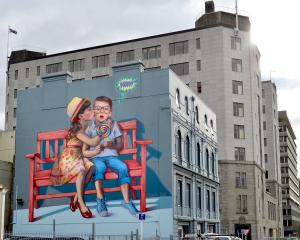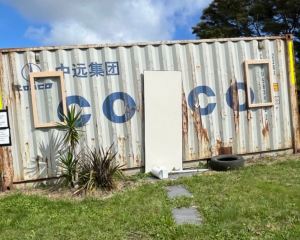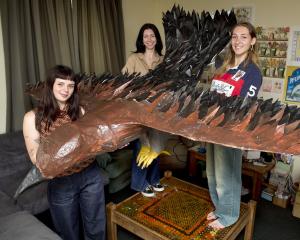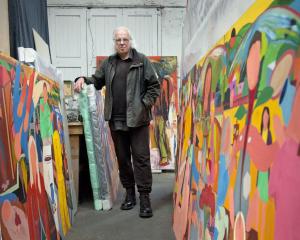A 250-year-old cello has a special sound - there's a woodiness and a resonance that is perhaps missing from a brand-new instrument, says Ashley Brown.
A member of the NZTrio, he is playing Joseph Haydn's cello concerto in the Southern Sinfonia's concerts this weekend. Changing to the old instrument after playing a modern New Zealand one, he noticed a change in the maturity of the sound. Instruments vibrated when they were played and settled into a pattern of vibrations over the years.''
I can just imagine the cell structure within the wood changes over hundreds of years of vibrating to particular pitches, so it makes sense to me scientifically,'' Brown says.
''To think this cello has played Haydn's C major cello concerto so many different times with so many different players and so many different orchestras, there's a history you can feel under your fingertips too.''
Brown's cello was made by William Forster in London in 1762. Forster was a friend of Joseph Haydn, and Brown likes to think the composer and his cello may have been in the same room when Haydn visited London to conduct his symphonies.
Brown started learning cello when he was 5. He remembers the quarter-size instrument and the first tune he learnt - Hot Cross Buns. His mother was keen for her three sons to have a well-rounded education and encouraged them in many activities, including music, as well as taking them to concerts.
''Evidently, I would go and stand in front of the cello section and suck my thumb and she decided the cello's the instrument for me. I was about 3 or 4,'' he says with a laugh.
Growing up in Auckland, he had cello lessons right through school, but when he came to the University of Otago to study law, he put it aside, except for playing in the Dunedin Sinfonia and National Youth Orchestra.
However, at a National Youth Orchestra camp in Christchurch one holiday, he watched a master class given by Alexander Ivashkin, who was auditioning for the position of cello teacher.
''It was awesome. I applied to transfer to Canterbury so I could do law and music at the same time. That went well - getting into Canterbury went well - but trying to do law and music at the same time didn't go so well. After a couple of years struggling and doing badly in both, I decided I had to choose. Ivashkin - he was an absolute force to be reckoned with and I was one of his first students - he and his wife took me by the scruff of the neck and made sure I played cello as a career. There was no saying no. At the time I was a bit lazy as a student so it was really good for me that someone shook me around a bit.''
After completing his master's degree at Canterbury, he studied at Yale with Aldo Parisot and then in London with William Pleeth, who had taught Jacqueline du Pré. Sam Konise invited him to join the Turnovsky Trio and become an artist in residence at Waikato University, which enticed him back to New Zealand. From there, he moved to Auckland as principal cello in the Auckland Philharmonia Orchestra, and then, with orchestra concertmaster Justine Cormack and pianist Sarah Watkins, formed the NZTrio in 2002.
''It's the main gig for each of us but we all need to supplement our income with other activities. We do other gigs - I teach one day a week at King's College - things that are able to fit around our touring.''
They also like to teach or talk to students whenever they visit centres to give budding musicians a different perspective or reinforce what their teachers might have said. Playing a concerto with an orchestra can be a different process than the collaborative one of a small chamber group. However, Brown says he likes to work collaboratively with the orchestra, although there are usually only two rehearsals with the orchestra.
''We have to be pretty fast about coming together and getting a meeting of minds among all the musicians, getting our bowings going the right way, our phrasings heading in the same direction, just agreeing on all these musical elements.''
The first port of call is collaborating with the conductor and it is his job to convey that to the orchestra.
''It would be nice if all the members of the orchestra were really invested in the journey. I think that lends itself to a much more satisfying performance from an audience perspective.''
The opposite of that is they know their parts, they play their accompaniment parts just the same with me as they do with everyone else and I play over the top of it and do something interesting with my part, but I'd like to come to it as a combined whole.
''Haydn's cello concerto was one of the early ones written for the instrument.
''Up to this point, the cello was regulated to playing the bass line, and maybe flutes or violins would get to play the concerto solo. The cello would be sitting beside the harpsichord plonking along in the bass line, much like a bass guitarist in a jazz trio,'' Brown says.
''Finally, between Haydn and Boccherini, they explored a position where the cello could play really high up the string, a new technique being developed around this time. Instead of playing lovely low melodies that you hear in more modern concertos for the cello, the whole idea was to make the cello sound like what people at the time expected from a concerto, high and loud.''
Many people would know the opening bars of Haydn's cello concerto and many students would have played it, he says.
''All three movements hang together beautifully. There's a real clarity of form. Haydn's such a craftsman when it comes to working harmonies that it makes absolute sense. You can hear the first phrase and can almost predict what the next phrase is going to be like - the perfect answering phrase, of course, with little twists and turns as you go through, and there's some really beautiful textures. It's one of those pieces that simply makes sense.''
See it, hear it
The Southern Sinfonia's concert, ''Mellow Cello'', at the King's and Queen's Performing Arts Centre on Saturday, July 20, at 5pm, and Sunday, July 21, at 3pm features Bach's Orchestra Suite No 4, Haydn's Cello Concerto No 1 and Mozart's Symphony No 41 (Jupiter). It will be conducted by Hamish McKeich with Ashley Brown on cello.












